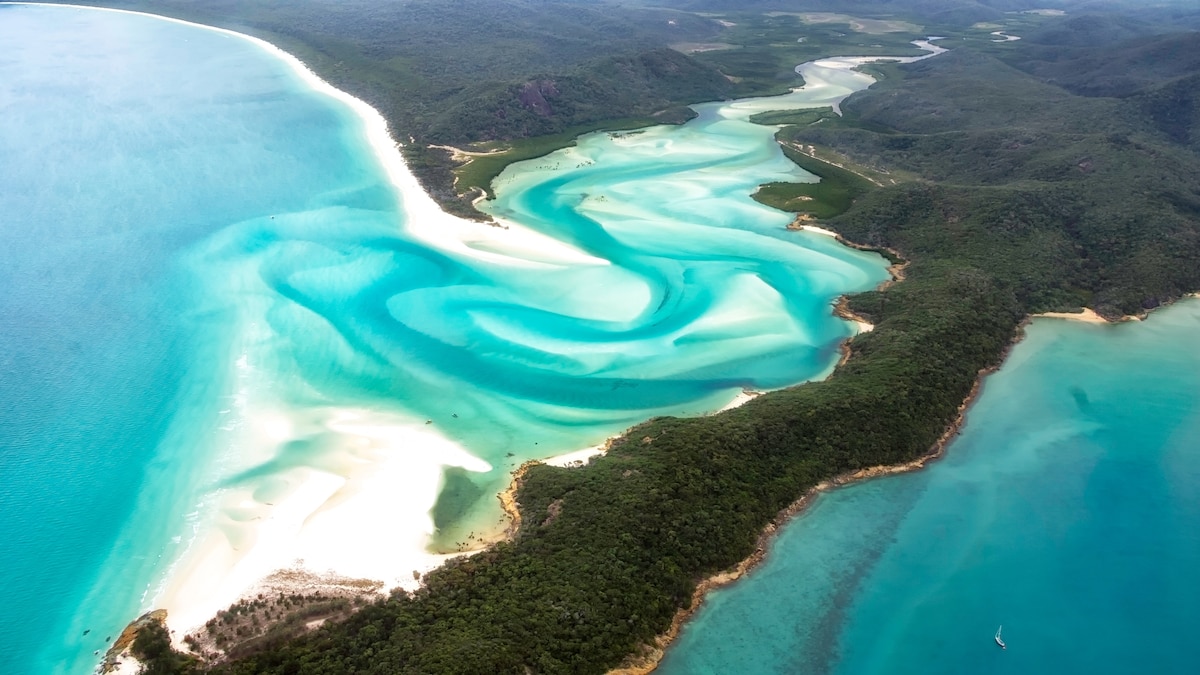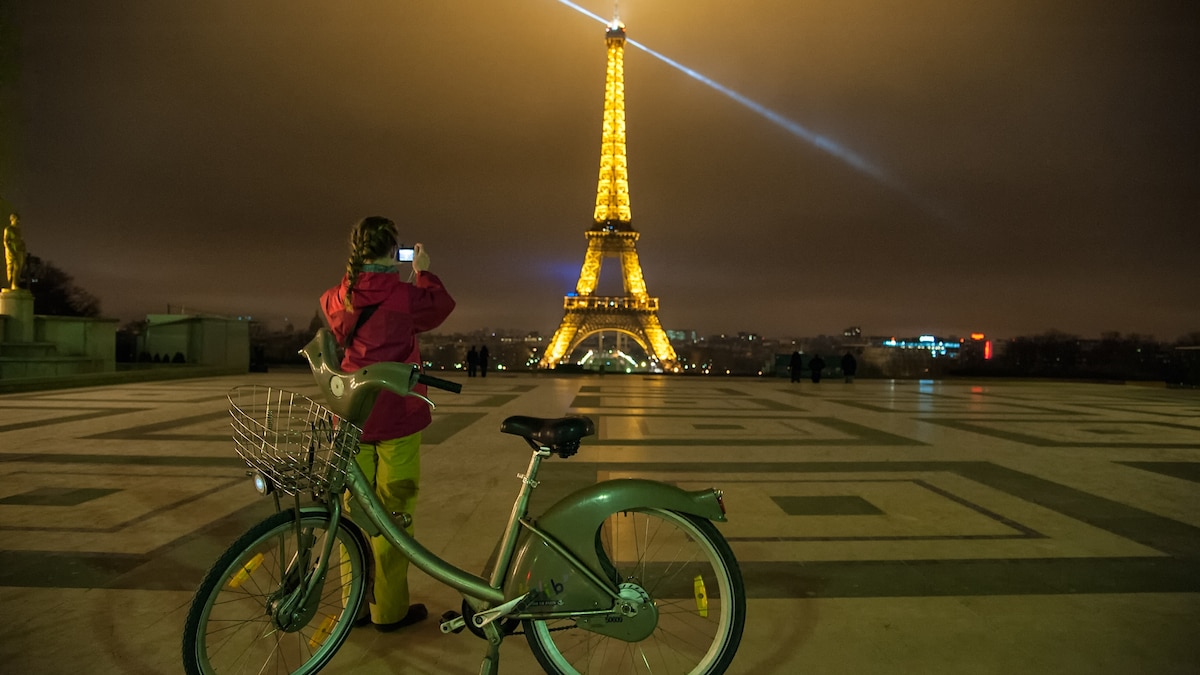Now Reading: 14 of the world’s best beaches
-
01
14 of the world’s best beaches
14 of the world’s best beaches


100 Beaches of a Lifetime includes beaches all over the world, from the most iconic to the ones with the best wildlife viewing.
Photograph by Denis Belitsky, Shutterstock
From Hawaii’s Papakōlea Beach to Butiama Beach in Tanzania to Reynisfjara in Iceland, there are many incredible beaches all over the world. The new National Geographic book, 100 Beaches of a Lifetime, explores all of these destinations and more. Here are 14 beaches that are worth traveling for.
Hoshizuna-No-Hama Beach, Japan
Japan’s lushest, warmest, most tropical region, Okinawa’s Yaeyama Islands are home to an unusual beach phenomenon: star sand. Closer to Taiwan than it is to the bigger islands of Japan, Taketomijima is among Japan’s southernmost, westernmost inhabited islands. It is also one of the few places in the world with beaches made of tiny, white, starshaped sand. These spiky grains of calcium carbonate, typically just a few millimeters in size, are actually the exoskeletons of a marine species called foraminifera (Baculogypsina sphaerulata), a single-cell organism. This rare creature lives symbiotically among the coral reefs and seagrass of East Asia and in a select few other places on the planet

The moody beach lies about 112 miles (180 km) southeast of Reykjavik, near a small fishing village called Vík í Mýrdal.
Photograph by Filip Fuxa, Shutterstock
Reynisfjara, Iceland
Of all the black-sand beaches in Iceland—and there are many—Reynisfjara stands out as the most enchanting. (Case in point: It was chosen as a backdrop for season seven of the HBO series Game of Thrones.) Its unique basalt formations and peculiar sea stacks, known locally as Reynisdrangar, loom large in Icelandic folklore, and a jaunt along this revered shore is rounded out with sightings of puffins, forays into sea caves, and wave action at its finest.
Elafonisi Beach, Greece
At the southwest corner of Crete, between the coastal villages of Moni Chrisoskalitissis and Gialos, Elafonisi Beach is best known for its exotic expanse of pink-hued sand and clear turquoise lagoon. Its distinctive color, like other pink-sand beaches around the world (page 309), is the product of foraminifera, a single-celled microorganism with a reddish shell.
Visitors are captivated by the beach’s striking colors of pink and bright blue, rolling dunes, and dramatic mountains. In the summer, the shore is crowded with beach chairs and umbrellas, as it’s a popular weekend getaway for residents of Chania, Crete’s main city. A few hours in the sun here are best followed up with a seafood dinner and some Greek wine at a nearby taverna.
Butiama Beach, Tanzania
If you’ve ever dreamed of escaping to a little-visited island to see the world’s largest fish, Butiama Beach is calling. This stretch of sand lies along the western shore of the largest island of the Mafia Archipelago, just off the coast of mainland Tanzania. Visitors who make the journey to this little-explored island spend their days lazing around in the sand, hanging out in laid-back villages, and snorkeling with majestic, 39-foot (12 m) whale sharks. These gentle giants return to the island every summer to eat up the resident plankton.
Durdle Door, England
On Dorset’s magnificent Jurassic Coast—a UNESCO World Heritage site along the southeastern shores of England—this beach and its namesake limestone arch are absolute showstoppers. The world-famous Durdle Door arch formed over millions of years by erosion caused by the crashing sea. Its fitting name comes from the Old English wordthirl, meaning “to pierce, bore, or drill.”
Pantai Merah, Indonesia
When people think about Indonesia’s Komodo Island, they mostly think about the eponymous national park and its giant, world-famous lizards. But there’s a lesser-known natural attraction that certainly holds its own: Pantai Merah, more commonly known as Pink Beach, is one of only about 12 beaches in the world with a blushing shoreline.
The unique hue of the sand comes from an accumulation of broken red coral and shells left behind by foraminifera—tiny marine creatures with red-and-pink shells. The microscopic organisms live in the coral reefs offshore, and after they die, their crushed shells wash up and mix with the beach sand.
Anse Chastenet, St. Lucia
Arguably the best beach on St. Lucia for snorkeling and diving, Anse Chastanet is also a must-visit for the breathtaking rainforest views along the shoreline. And of course, for its iconic backdrop: the Pitons.
Located in Soufrière on St. Lucia’s southwest coast, the beach is secluded but sees significant crowds, given its status as one of the area’s top romantic getaways. Anse Chastanet Beach is part of an eponymous luxury resort known for kind staff members and eco-friendly practices, including coral reef restoration projects.

To reach Baía do Sancho, visitors must fly from mainland Brazil, departing from either Recife or Natal, to the main island of Fernando de Noronha.
Photograph by Leonardo, Adobe Stock
Baía do Sancho, Brazil
Some 326 miles (525 km) off the coast of Brazil, the volcanic archipelago Fernando de Noronha is replete with lovely beaches. But Baía do Sancho is the loveliest of all. Many visitors rank Sancho as the best beach in the world, and for years it held that top distinction on Tripadvisor.
That’s probably thanks to its beauty—and remoteness. The crescent of soft white sand lies at the foot of tall, craggy cliffs cloaked in dense groves of fruit and nut trees and medicinal shrubs. Sea turtles and dolphins frequent these waters, along with seabirds that regularly visit the cliffs. But few people find their way to this tropical sanctuary, which is part of Brazil’s first national marine park and a UNESCO World Heritage Site.
Bowman’s Beach, United States
Bowman’s Beach on Sanibel Island is an undeveloped stretch of sand carpeted with shells: false angel wings, coquinas, conchs, whelks, junonias, cockles, sand dollars, and banded tulips, to name a few. A quarter-mile (400 m) walk from the road gives the beach a hidden feel, but among beachcombers, it’s famous. Considered one of the best shelling shores in the country, Bowman’s is the beneficiary of its geography, as an underwater shelf scoops the shells of gastropods and bivalves onto the shore like a special delivery from the ocean gods themselves.
Anse Source d’Argent, Seychelles
Does Anse Source d’Argent look familiar? It should. This remote and delightful cove on La Digue, one of 115 islands that make up Seychelles, is one of the most photographed beaches on Earth— and for good reason. Defined by its clear blue-green water, rosy sand, and fantastic boulders, this is surely one of the world’s most beautiful beaches, and it features prominently in advertising campaigns that strive to invoke paradise.
Praia da Marinha, Portugal
This dramatic stretch of Algarve’s shore ranks among the world’s most dazzling coastlines. Its soaring sandstone cliffs, arches, and pillars appear in stacks of promotional materials for the region, so the staggering number of tourists that descend, particularly in summertime, is unsurprising. But it’s worth dealing with the crowds to experience this striking beauty.
Papakōlea Beach, United States
There are just four green-sand beaches in the world. Papakōlea Beach, on the south point of the island of Hawaii, is by far the most popular. Its sparkly sand is made up of olivine crystals formed around 49,000 years ago with the eruption of Pu‘u Mahana. The cinder cone volcano spewed lava down into the sea. Over millennia, powerful waves eroded the hardened lava, but the relatively heavy element olivine stayed put on the beach.
Chesterman Beach, Canada
Canada doesn’t usually come to mind as one of the world’s greatest places to learn how to surf. But if you’re willing to don a wet suit and travel to the tip of hauntingly gorgeous Vancouver Island, Chesterman Beach is pretty much a beginner’s wave paradise. It’s also a lot of other things, including a storm-watcher’s destination, a woodcarving hub, a great spot to explore tide pools and sea caves, and a prime spot to watch the sunset.
Whitehaven Beach, Australia
Off the coast of Queensland, on Australia’s eastern seaboard, the Whitsunday Islands (74 in all) are part of one of the country’s most revered national parks and the UNESCO Great Barrier Reef World Heritage site. Within this internationally recognized archipelago of coral cays, mangrove forests, lush mountains, and barrier reefs of uncommon biodiversity, Whitehaven Beach is the islands’ most celebrated destination.

























